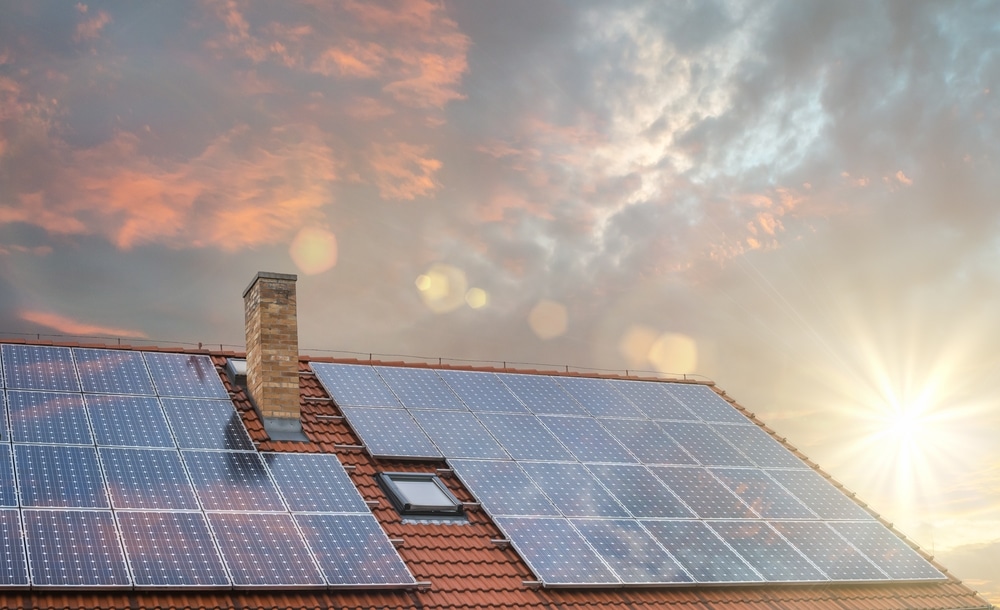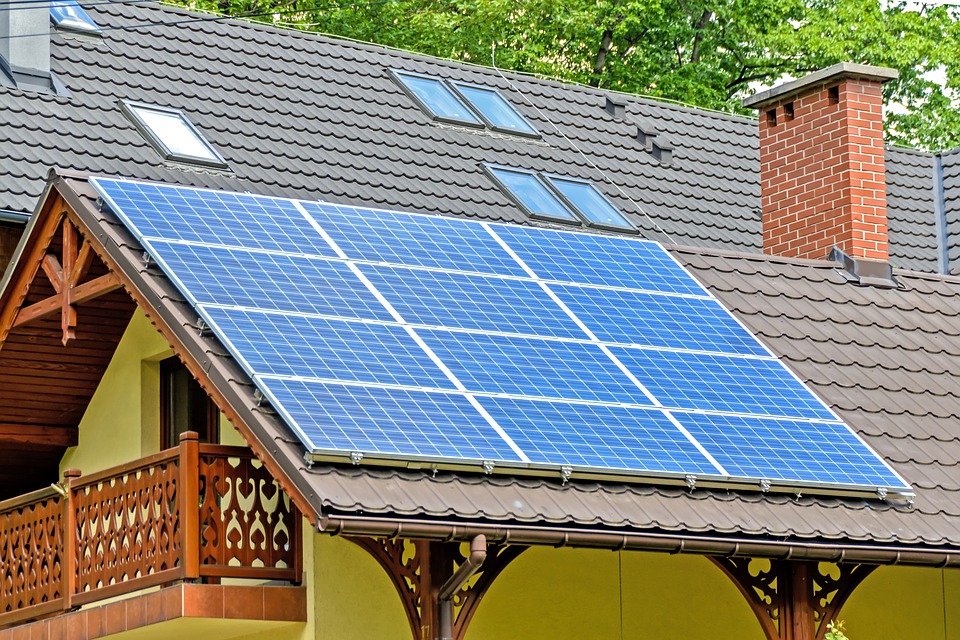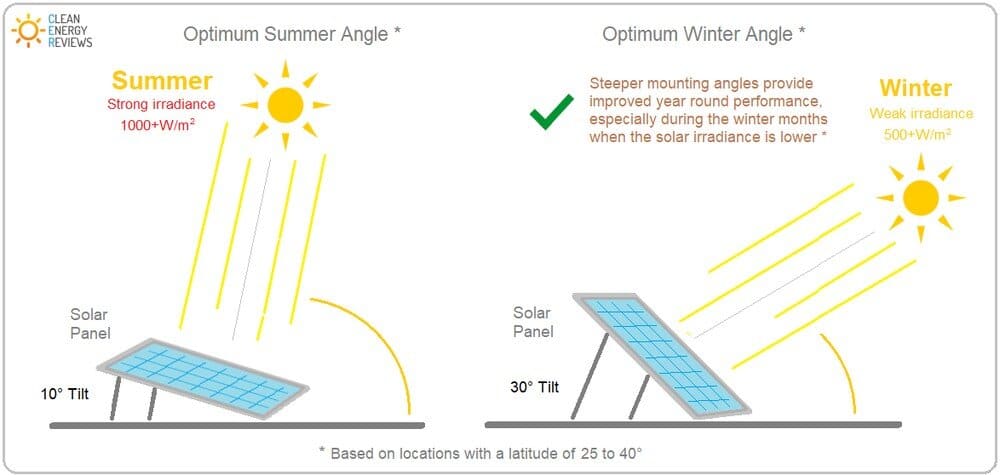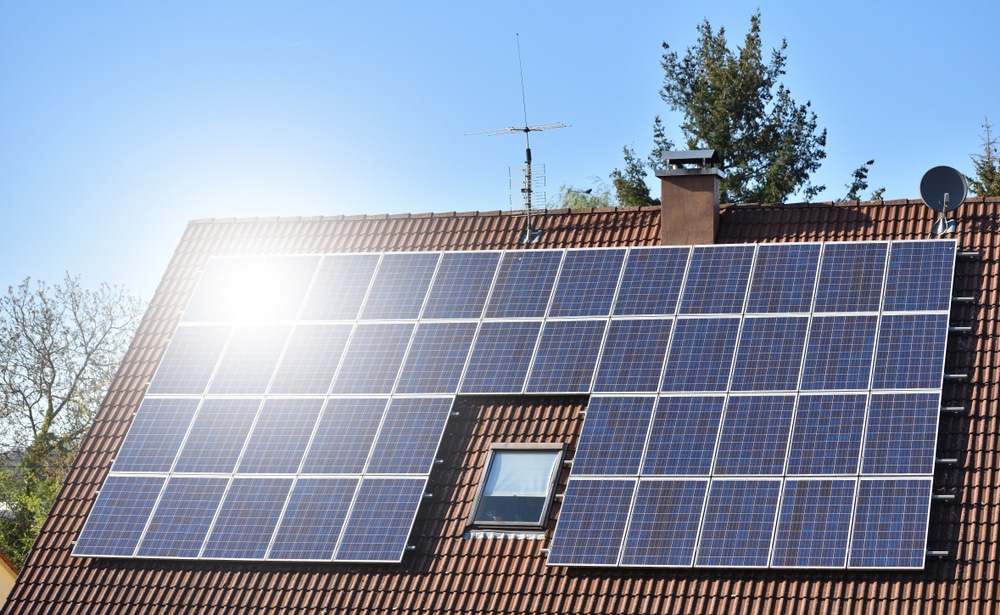The decision to install solar panels on your roof involves many factors. The brand, type, quantity, installation, and whether they’re worthwhile in the long run must all be considered. The placement of your house solar panels, however, will be one more important issue to take into account once you’ve put in the hard work of researching all of your options.
For those seeking additional insights and a tailored approach to solar panel placement, Energy Matters offers a valuable resource. You can get free solar quotes online, enabling you to make decisions about not only the panels themselves but also their optimal positioning for maximum efficiency.

The best direction for the solar panel
The placement of solar panels is crucial since those facing the direction with the least sun exposure generate about 28% less energy than those facing the best. The sun moves towards the north since Australia is in the southern hemisphere.
Although it depends on many circumstances, facing your solar panels north is typically considered the best direction for the solar panel option in Australia. This is due to more exposure in this direction during the midday hours.
However, pointing your solar panels true north will only sometimes be the greatest option because terrain, latitude, and location affect where the solar panels are most effective. Along with additional factors like:
- Your roof may receive shade from nearby trees or structures at various times of the day, rendering any solar panels you may have inoperative.
- Westward-facing solar panels perform better in locations where mornings are typically cloudy.

Combining directions
Your solar panels can be facing in different directions. Solar panels could, for instance, be positioned, with some facing north and others facing west. An output equivalent to northwest facing solar panels will emerge from this. Even more than two directions can be covered by solar panels.
North facing solar panels
North facing solar panels will generate the greatest overall electricity. This orientation is frequently the best option for staying home during the day. They use electricity when it’s produced, but it’s also simple to shift demand using appliances like washing machines and dryers. The greatest environmental benefit will come from solar panels that face north because they generate the most electricity overall.
South facing solar panels
As the sun is always in the north, the south orientation is the weakest position for solar panels. For instance, south-looking solar panels in Sydney will generate almost 30% less electricity than those facing north.
West facing solar panels
West facing solar panels typically generate around 15% fewer panels than those facing north. They reach their peak production afternoon and produce more electricity in the afternoon than north facing solar panels. They are an excellent option for homes with heavy evening electricity usage.

East facing solar panels
The opposite of west-facing panels is facing east. People with higher electricity use in the morning are best served by east facing panels since they avoid paying peak morning electricity rates. Like solar panels facing west, east-facing solar panels produce 15% less electricity.
North west facing solar panels
North-west facing solar panels will generally produce 5% less electricity than north facing solar panels. The electricity they produce throughout the day will fluctuate between panels facing north and west. The afternoon is when they create somewhat more electricity, and the morning is when they produce slightly less.
North east facing solar panels
North-east-facing solar panels will generate around 5% less electricity than north-facing ones, and their daytime output will fall somewhere between north- and east-facing solar panels.
East west facing solar panels
The overall amount of electricity generated will be roughly 15% lower than if all the solar panels were facing north; some were facing east and others facing west. The advantage of this configuration, also known as an east/west split, is that it produces a more steady output of electricity throughout the day, which may help to boost personal consumption. The output of the system will be smoother the steeper the roof is.

The best angle for solar panels
It helps to keep solar panels at their perpendicular position or select the proper tilt angle to provide the highest solar energy production and better energy saving for the household. For instance, Sydney is located at a latitude of about 34 degrees. Hence for best efficiency, it is advised that the solar panels be put at a 34 degree angle towards the sun. Brisbane solar panels should be angled at 26 degrees, facing north, according to UQ Global Change Institute researcher Professor Tapan Kumar Saha.
The weather may also affect your solar panels. A good illustration of this is a lot of snow. It may hamper your solar panels if you reside in a region where excessive snow accumulates. You can reduce snow accumulation or debris by tilting your solar panels at a sharper angle.

In comparison to installations on rooftops that are tilted, you would get about 15% less energy overall from solar panels installed on a flat roof. In this case, you would receive more in the summer and less in the winter, and you would experience issues when it rained because there would be no way for the rainfall to drain off the panels without some tilt. If not, the rain will only wash them, adding to your solar panel maintenance duties.
Optimum angles for solar panels: Latitude takes centre stage
The ideal tilt angle for your panels is more than just following the sun. It’s also about matching the angle of the sun’s rays at your specific location. A general rule of thumb is to tilt your panels at an angle equal to your latitude. This ensures the panels are perpendicular to the sun’s rays most of the year, maximising energy capture.
- Brisbane: 26-27.5 degrees
- Sydney: 33.9-34 degrees
- Melbourne: 37.8 degrees
- Adelaide: 34.9 degrees
- Perth: 31.9 degrees
Several factors can influence the perfect angle for your panels:
- Shading: Obstacles like trees or buildings can cast shadows on your panels, reducing efficiency. Consider tilting the panels slightly higher to avoid shading during peak sun hours.
- Seasonal variations: You might prioritise winter or summer sun capture depending on your energy usage patterns. Tilting slightly steeper can capture more winter sun, while a shallower angle might be better for summer.
- System size and type: Larger systems might benefit from slightly steeper tilts, while smaller systems might perform better at shallower angles. Panel type (monocrystalline, polycrystalline) can also influence the optimal angle.
Read more about Solar Panel Tilt: Does the Angle of My Solar Panels Really Matter?
Consulting the experts: A wise investment
While these guidelines offer a good starting point, seeking professional advice is crucial for determining the optimum angle for solar panels and the best direction for your situation. A qualified solar installer can assess your location, roof pitch, shading patterns, and energy needs to recommend the ideal tilt and orientation for maximum solar power generation.
Remember, every roof and every household is unique. By understanding the interplay of sun, location, and tilt, you can harness the Australian sunshine to its fullest potential, powering your home and saving on energy bills.
Installing solar systems
If you plan to install solar systems, you should set them up for the best possible efficiency. Solar panel designs are incredibly crucial, their orientation is overlooked, and the angle the solar panels face is also incredibly important for how the system functions.
Energy Matters has been a leader in the renewable energy industry since 2005. We can connect you with our trusted local installers, who will provide up to 3 FREE solar quotes for your home and business solar energy system. Complete our quick quiz and begin your solar journey today!
Updated January 2024













































